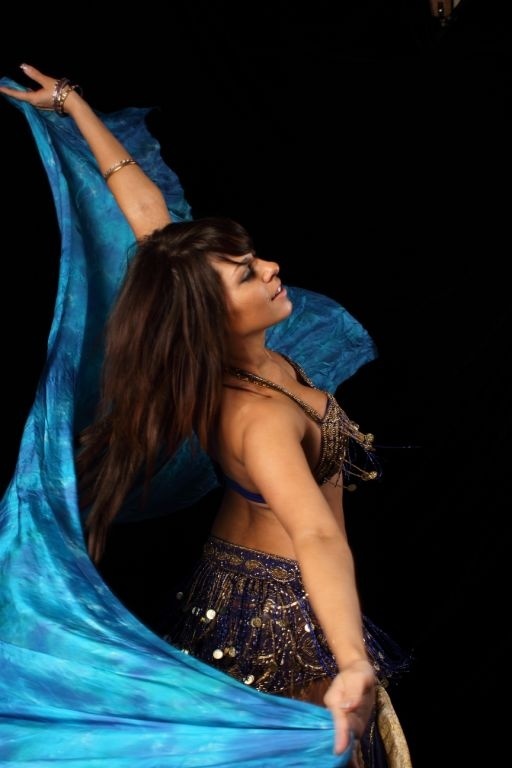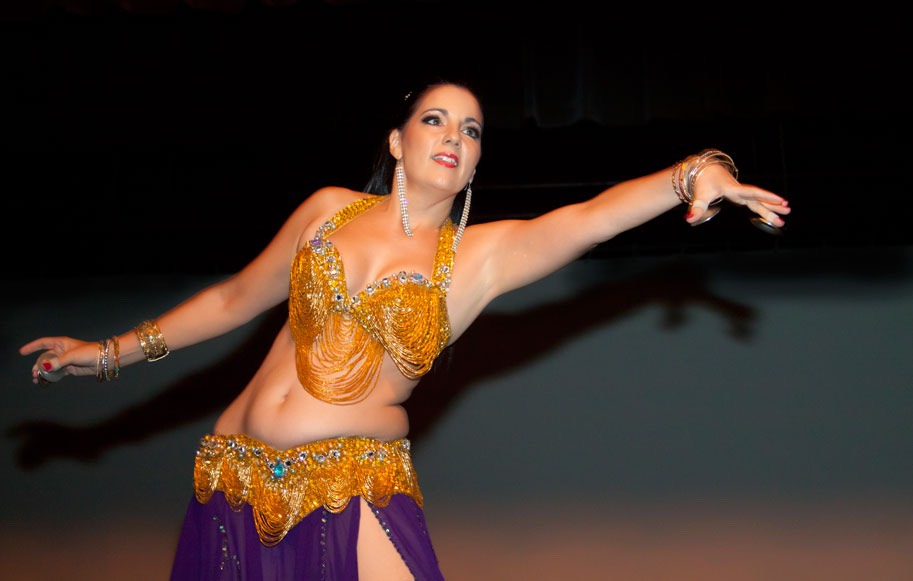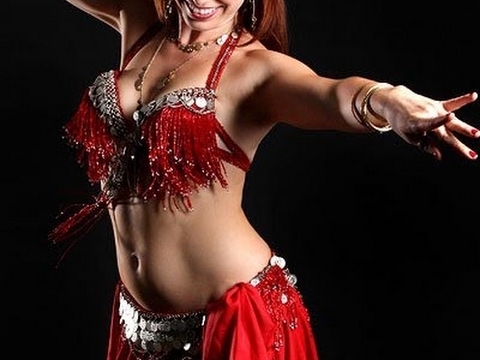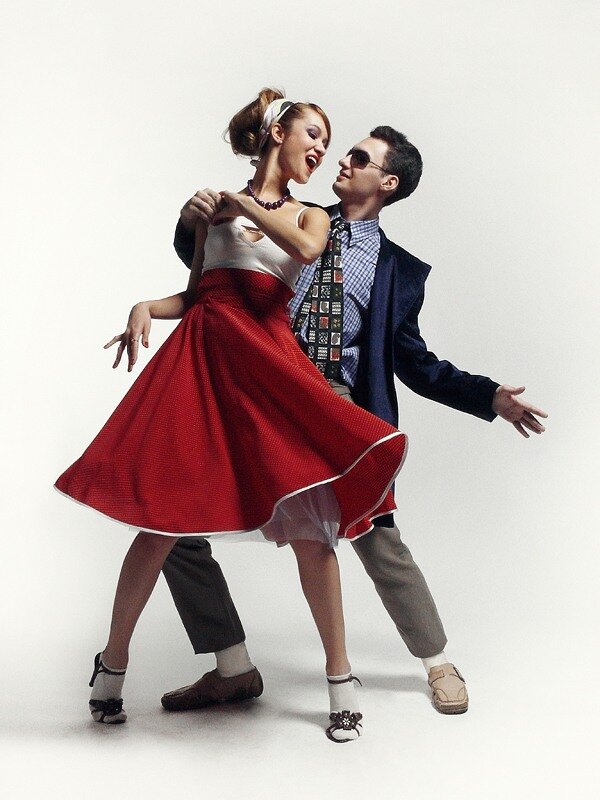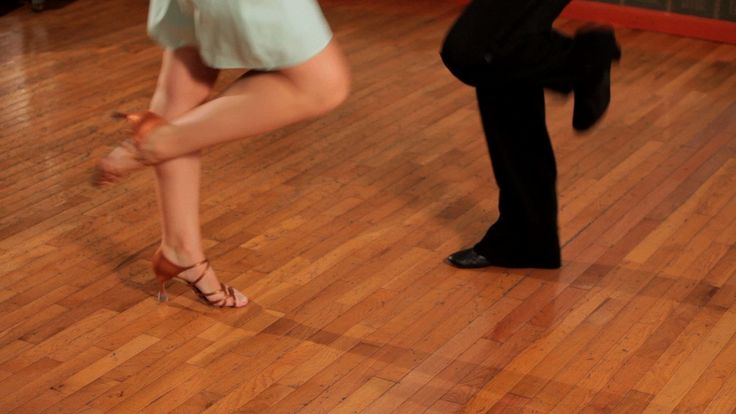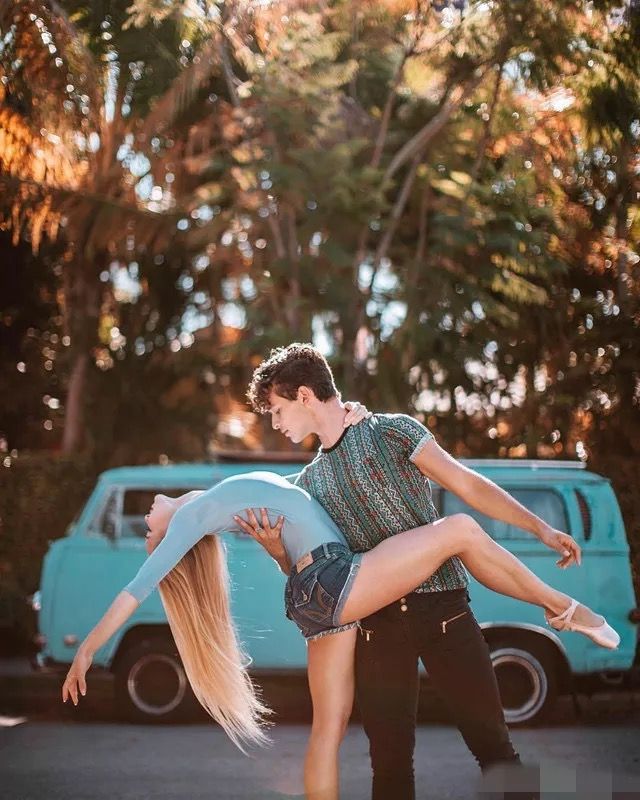Teach me how to belly dance
ESSENCE OF BELLYDANCE™ - Free Online Belly Daning Classes
ESSENCE OF BELLYDANCE™ - Free Online Belly Daning Classes Join over 26.000 women in our Online Bellydance Classes Do you ever wonder how some women seem to move so effortless and
confident? Learn to move like a pro.
Join our online belly dancing classes - it’s free!
Start now
ESSENCE OF BELLYDANCE™ Online ClassesYou can dance with us for free! We have published the basic belly dance moves and regularly upload new videos for you. All workouts are playlists of several videos and contain a complete body warm up and a relaxing cool down Tell me more
Bellydance Class #1entry level
Start your training with this entry level class. You learn the fundamentals of belly dance: posture, seesaws, side sliding and mayas with your hips and chest.
Bellydance Class #2Beginner
Do the moves fromclass #1 already feel smooth & juicy? In class #2 you'll learn more belly dance basics: tilting internal circles and vertical circles with your hips and chest. The afro with pelvic floor integration is our specialty.
Beginner
In class #3 you'll learn more of the essential belly dance basics: sliding forward and classical Egyptian horizontal circles with the hips and chest.
Bellydance Class #4Beginner
In class #4 you'll learn more belly dance basics: camels with the hips and chest and your first sharp hips accents initiated by your gluteus muscles.
Bellydance Class #5Beginner
In class #5 you'll learn more belly dance basics: twists and horizontal eights with pelvic floor integration as well as some basic arm movements like the snake arms.
Bellydance Class #6Advanced
In class #6 you'll learn some advanced belly dance moves: hagala schimmy and variations as well as arm movements that lead up to the snake arms.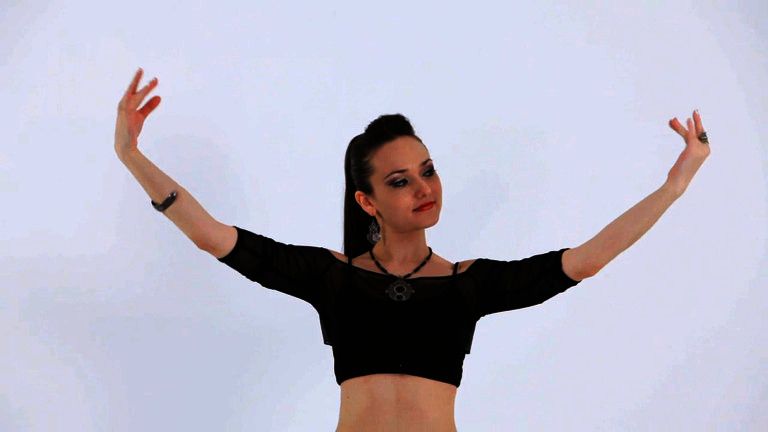
Advanced
In class #7 you'll learn some advanced belly dance moves: hip drops, accents, elegant eights with foot lifts, layered with chest camels and hip drops, as well as the secrets of a great hip shimmy.
Bellydance ChoreographyIntermediate - Advanced
Learn my beautiful belly dance choreography step by step! It's my interpretation of a classical Egyptian love song "Daret Al Ayam" (Days go by) by Um Kalsoum.
Bellydance all movesBeginner - Advanced
Here you have an overview of all the belly dance moves you have learned so far. Step by step instructions.
Bellydance all DrillsBeginner - Advanced
Here you have an overview of all the Bellydance drills with music. Dance for as long as you can!
Tips on Dance & HealthAn overview of Coco's tips & the home of her new interview series Free Woman. Have fun!
Have fun!
An overview on full length bellydance classes that we've recorded for you here in Berlin. The German video contains subtitles.
Sensuous Dance WorkoutEverything about Coco's Sensuous Dance Workout program - your personal wellness program at home: TV-shows, reviews, interviews.
COCO's Bellydance ShowsHere you can see a collection of Coco's belly dance shows. Enjoy!
Teacher TrainingListen to what our graduates have to say about our teacher training and watch the scholarship entries.
Fun Travel, interviews...An overview of all interviews, travel vlogs and other videos from and with Coco.
Join over 26.000 women in our Online Bellydance Classes Do you ever wonder how some women seem to move so effortless and
confident? Learn to move like a pro.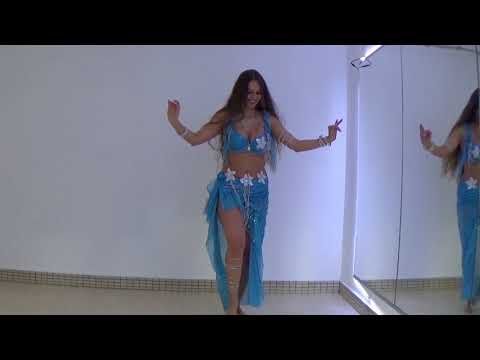
Join our online belly dancing classes - it’s free!
Start now
We use cookies to deliver our services. By using our website, you agree to the use of cookies as described in our Cookie Policy.
as seen on
- Learn how to belly dance
- Join our free online belly dancing classes
- How to belly dance for beginners
- Become a belly dance teacher and start your own classes
- Best online belly dance classes
- Discover belly dancing classes near you or learn how to belly dance online
- Best belly dancing workshops and classes online
10 Tips on teaching belly dance. Warm up, stimuli and choreography.
Last Updated on January 27, 2022
Generally speaking, teaching belly dance is not very different from teaching other types of dance.
What is different is of course the dance vocabulary you will be teaching, the context, and everything else that is relevant to the style of oriental dance you teach.
However, most teaching techniques apply to most types of dance. Here are some tips I think might help you if you are planning to teach belly dance.
Dancer Warm Up and Cool Down
Provide warm-up at the beginning of each session and cool down at the end. Warming up, at the beginning of a dance class, not only is important to avoid injuries but also prepares the students mentally.
By warming up your students will start leaving their daily worries behind and get in the mood for dancing.
For a belly dance class, you can include dance movements that remind of belly dance moves, such as hip circles or stretching the hips from side to side.
For a start, it is important to warm up the joints with small movements that increase progressively.
You can, for example, start with gentle head rolls, followed by shoulder rolls, hip circles, wrist and ankle circles, and anything that mobilizes the joints.
You need to start gently with a small range of motion and then you can increase the range gradually but keep it gentle and keep in mind the fitness level of the class.
After you can do something that raises the heartbeat slightly, such as side lounges, for example, or lightly jogging on the spot.
You can end with short stretches, not holding for more than 10 seconds as you will be just warming up.
Of course, always be mindful of the reaction of students in your class, their level of fitness and advise them to stop if they feel any discomfort.
I have found a video below that shows some joint mobility exercises.
These were designed for a fitness routine but they can give you some ideas on what to use for your class if you adapt them and make them more belly dancey.
Cooling down and stretching at the end of the dance class are equally important to avoid injuries. At the end of the class you can hold stretches for longer, about 30 seconds, as the muscles will be warmer.
Organise the space wisely
The way you use space in a dance class reflects the mood you want to give to your class.
For example, you may want your students to stand in a circle for an inclusive atmosphere while warming up, or improvising some belly dance moves.
For choreographies, it is better for the students to stand in rows in front of you.
However, if there are many students, every now and then make the rows that are in front go to the back and vice versa, so that everybody can see you.
If you are teaching a traveling step, you may want to make the students move diagonally from one corner of the room to another, in small groups of, for example, 4 at a time, so that everyone has enough space to move properly.
If you are standing in front of the students, you can either teach facing them or with their back to them.
If you are facing them you can keep an eye on them to make sure that they are doing the movements correctly, but remember to mirror their movements.
So, if you want students to start with their right foot, for example, you will need to move your left foot.
When you face away from the students, sometimes it makes it easier for them to follow you as they will not mirror you but move at the same time as you.
If then the class has a mirror, it is great as students can see your movements from the back as well as the front and you can check on them in the mirror.
Provide Structure in your Classes
Providing structure to your belly dance class. For example: start with warming up, then move on to do some revision of old moves, then introduce new movements, then do some practice (drills, choreography or improvisation) and then cool down.
The structure will help you as a teacher to build your teaching routine and, if you want, you can also create a written teaching plan for you to revise every week and you could also make notes on it to record how students reacted, so you can better plan in the future.
At the same time, the structure is useful for students as they will know what to expect. Structure does not need to be boring or repetitive though, as you will change material within that structure according to what you want to teach.
Revise Material That You Teach in the Dance Classes
Go over your material from the previous class. Revising at the beginning of each class I think is very important in order for the students to remember and build on what they learned.
Many students will come to the class only once a week and many of them will not have a chance to practice in between lessons.
Hence, picking up from where they left at the end of the previous class is a good idea.
You do not need to spend a lot of time revising but it is useful, especially if the class is about technique.
If you are teaching using set routines or choreography only, maybe revising is not necessary as students will repeat movements over and over as they rehearse the routine or the choreography.
Otherwise, for a technique-focused class, revising is useful.
Use Different Types of Stimuli
The use of different stimuli for explaining new belly dance moves. Many educators agree that people learn mainly through three different types of stimuli: visual, audio, and kinaesthetic (through movement and body perception).
Every person has one or more favorite channels of learning and, by using all stimuli, you will be able to reach more people.
For example, you can show the movement, explain it out loud, or, if a student is mainly kinaesthetic, she can touch the part of your body that is moving.
Other ways to use more than one sensory channel to learn dance movements or learn how to interpret a piece can be:
- Let students listen to the music they will be dancing to carefully before dancing. In this way, students will get a feeling for the music that will help them embody it better and remember the movements more easily.
- Encourage students to hum along to the music as they move, so they can really associate a sound with movement in their bodies.

- Encourage students to improvise to a piece of music, even if you will then teach them a piece of choreography so that they have a chance to really internalise the feeling of that music and make it their own.
- As students listen to the music, encourage them to draw lines on a piece of paper according to the feeling of the music. This will help them better understand the feeling by linking audio and visual information (and kinaesthetic, as the hand moves to draw lines on paper).
- Suggest imagery as you teach movements to give them an idea of the feeling they need to get. For example, you can suggest the feeling of moving through water when the movement needs to flow but also have some resistance to it.
- Do not be afraid to let your imagination run free, as mind images are really useful to learn movements. You can also visualise shapes suggested by the music.
Another way to give variety to your class and make it fun is by using games and activities.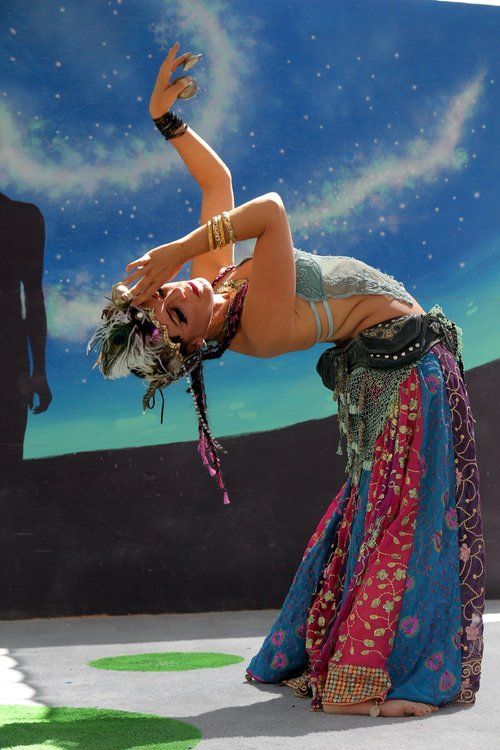 A useful book I have found that gives belly dance teachers a lot of ideas is ‘Belly Dance Beyond Moves, Combos, and Choreography’ by Taaj.
A useful book I have found that gives belly dance teachers a lot of ideas is ‘Belly Dance Beyond Moves, Combos, and Choreography’ by Taaj.
Listening to the Music
Listen to your students and pay attention to their expressions.
Sometimes students will not tell you if something is wrong, so it is up to the teacher to keep an eye on them to spot if they need help.
Also, when students do talk make sure you really listen to their feedback and/or concerns. In terms of correcting people, when I am learning in a class I like being corrected, otherwise, you cannot learn if you are not told that something is not right.
However, a teacher needs to be sensitive and diplomatic about it. Some students do not like to be singled out for correction.
So, what you can do is give the class as a whole, some suggestions on how to improve a movement or the right and wrong way to do it, so hopefully, those who need the advice will take it on board.
Projecting your Voice as a Dance Teacher
Using your voice properly, especially in big classes, so that every student can hear you.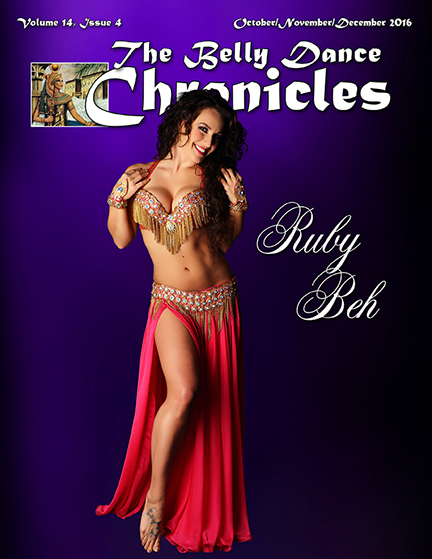
This comes naturally to some people but not to everybody. If, for example, you have a soft voice like me, you have to make an extra conscious effort.
Follow this link for some useful tips on how to project your voice. Apparently, relaxation, breathing, posture, projection, and opening your mouth properly but without strain are all useful things to keep in mind.
If you need extra help you can enroll in a voice training course or find a voice coach near you.
Remember to Teach and Not Just Dance
Even if you love dancing, during a class do not forget that your main aim is to teach.
So, if you are teaching, do not just starting dancing away without caring if the students are following or not, but pay attention to them and explain clearly what they are supposed to do.
Yes, for students it is important to have an inspiring teacher who loves dancing and can transmit this feeling to them.
However, teaching is not a self-centered activity but it is about caring, wanting to transmit something and making sure that people get what you are trying to communicate.
Use a choreography
Teach a piece of choreography. Even though the beauty of belly dancing is ultimately being able to improvise, learning a piece of choreography will help your students understand how to put the movements together in a sequence that looks nice.
Choreography is a useful didactic tool and it does not matter if your students will end up performing it. If they have the opportunity to perform that choreography, it will be even better as they will have more motivation and something to work towards.
If not, it is still useful to be able to put moves into context. Even if belly dancing was originally a social dance in its countries of origin and, in those countries, even when it is performed, it is quite often improvised, for people who were not brought up there and who have to learn as adults, choreography is a useful learning tool.
Speed Issues When Teaching Belly Dance
Be aware that every student may learn at different speeds, so make sure you give them more than one option (more difficult and easier) for movements you want them to perform.
In this way, the ones who learn quicker will not get bored, while others will not struggle. Giving different options at various levels of dexterity is particularly important in mixed ability classes, which are often the most difficult ones to teach because of the different levels of ability.
However, offering students various options with varying degrees of difficulty can help to teach mixed classes.
For example, you can ask students at more basic level to perform a certain hip movement, but you can ask more experienced students to layer that same movement with something else such as arms or feet patterns or layering a shimmy on top (for example, horizontal hip figure of 8 shimming the hips at the same time).
Teachers Courses
Currently, there are not many courses for training belly dance teachers, and courses that give a properly accredited qualification are even rarer.
Those who want to teach this dance form have to rely on other courses, fitness teaching courses, for example, to learn at least how to teach exercise safely.
Alternatively, you may want to search for dance pedagogy courses that will not be specific to belly dance but at least can give you some background training on how to teach dance.
The only accredited teaching course, specifically aimed at belly dance, that I am aware of is in the UK, in London, and it is run by the Josephine Wise Academy of Arabic Dance.
This course teaches how to deliver classes safely, how to understand the music used in belly dance, and gives information on the history and the culture. You can find out more information about it on the JWAAD website.
If you know of any other accredited course or want to give feedback or add information, please do not hesitate to write your comments below or to email me
The following two tabs change content below.
- Bio
- Latest Posts
Dr Valeria Lo Iacono is a belly dancer and a dance researcher with a PhD in dance and heritage. Valeria also teaches and performs as a belly dance but also enjoys learning ballet, jazz dance and other dance genres.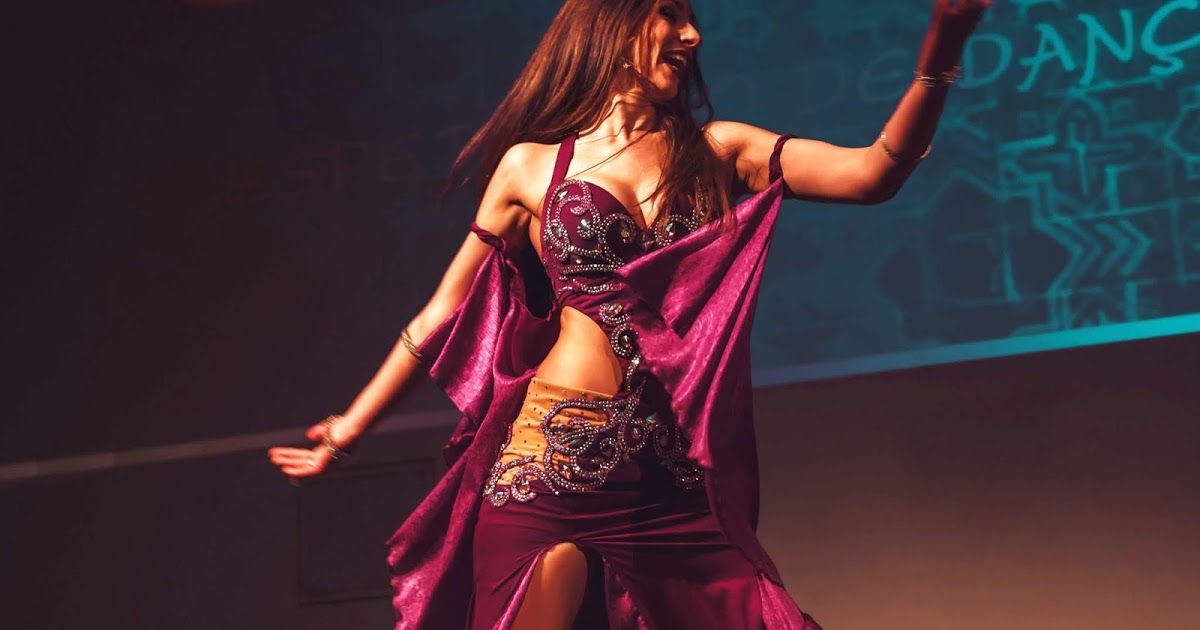
Sharing is caring!
370 shares
- Facebook274
Read the book: “Theory and methods of teaching oriental dance in adult groups. Methodical manual"
© Galina Saygusheva, 2019
ISBN 978-5-4496-2830-5
Created in the intellectual publishing system Ridero
For most people, belly dance is just an exotic oriental dance, very beautiful and charming However, it turns out that it not only carries aesthetic and spiritual components, but is also extremely useful for healing and strengthening the female body.
Belly dancing actively develops coordination of movements, the vestibular apparatus, has a beneficial effect on the ligaments, the cardiovascular system. In our time, belly dancing has also turned out to be an excellent prevention of hypertension and cervical osteochondrosis.
Oriental dance requires even rhythmic breathing, which helps to reduce stress levels, because rhythmic breathing affects the pleasure centers and releases mood-enhancing endorphins.
The peculiarity of belly dance is that it is performed in a relaxed state, without sudden movements and power load. Thanks to this, the back gains flexibility. Hand technique is "based" on the tension of the back muscles, which, in turn, affects the formation of a beautiful posture. After a few sessions, women “straighten up”, open up, stop slouching. That is why - pain in the cervical, thoracic, lumbar spine decreases. Constant headaches disappear, joints are strengthened.
Movement of the arms and shoulders in dance also strengthens the pectoral and intercostal muscles. This helps to maintain a beautiful shape of the breast for many years.
In addition, belly dancing is a physical load on those muscle groups that are not involved in our daily life, but are necessary for a woman for her main function given to her by nature - bearing and giving birth to a healthy child. For those women who do not yet have children, belly dancing is an excellent preparation for childbirth.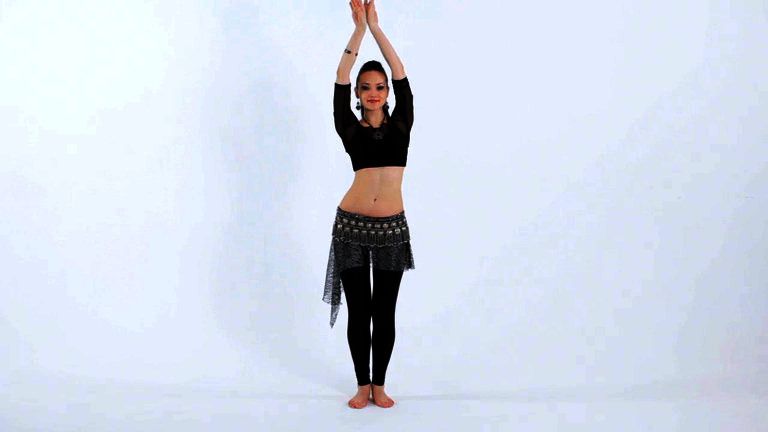 However, all of the above are just the outward virtues of the art of Arabic dance, which most often attract beginners.
However, all of the above are just the outward virtues of the art of Arabic dance, which most often attract beginners.
As the elements of belly dance are mastered, a woman's sense of self changes, inferiority complexes disappear. Our usual problem with you is that it is hard for us to get involved in work on ourselves, to move from our familiar place. How many times have you said to yourself: “That's it! From tomorrow I start doing exercises (I will sign up for a fitness center, etc.)!” But "tomorrow" was coming... and?... Nothing happened!!! You also didn’t have time, energy, or everything was again transferred to “tomorrow”. I know! She is like that!
So: Dance is a beautiful way to outwit your ossified psyche, luring it into the enchanting mood of dance, into that world in which you want to dissolve and stay. And here begins soft work on oneself without violence, with love for one's own nature. It all starts with accepting yourself and, first of all, the features of your figure and appearance.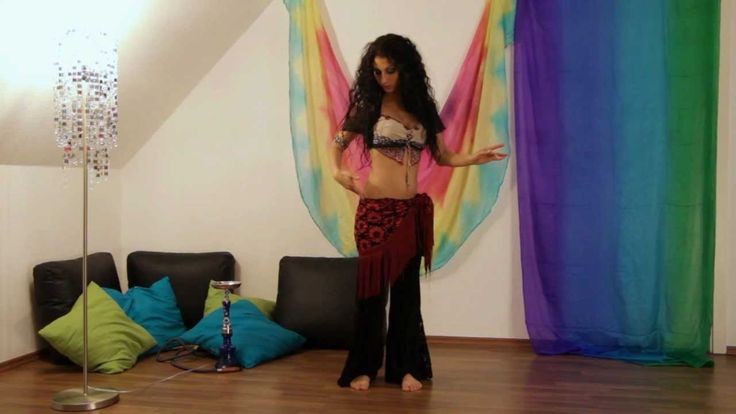
It becomes clear that external beauty is molded from internal states. The feeling of one's own uniqueness is emphasized by the performance of belly dance elements. Even the standard set of basic movements for each woman looks attractive in her own way. With an increase in self-esteem, the behavior of a woman changes, she becomes more relaxed, interesting for herself and others. There is a realization of one's uniqueness, and the world around becomes beautiful.
There is an ancient oriental parable: “A man came to a sage and said to him: “O sage, teach me to distinguish truth from falsehood, beauty from ugliness. Teach me the joys of life." The wise man thought and taught the man to dance."
Emancipation in dance is the most difficult thing. But gradually, achieving this, we change internally. And this manifests itself not only in creativity, but also in life. We become softer, calmer, which means our relationship with the outside world is more harmonious. A “zest” appears in us, which is the basis of female charm and attractiveness.
The movements of this dance are so individual for each person, each physique, that in the process of training a woman studies in detail the features of her own plasticity, learns to love her body and improve it on an individual basis, without trying to squeeze herself into generally accepted patterns and standards of beauty. There is no body that would not be "not suitable" for dancing, just everyone needs a special approach, which the hostess gladly opens.
We worship female beauty and preach that there are no ugly women! It is impossible to reduce the whole variety of forms to standard 90-60-90! And therefore, we will argue with the image of elastic pumped-up muscles of women's shoulders, buttocks, abdomen, hips, imposed by advertising. Yes, we are for harmony and smartness, but achieved by harmonious development - a conscious exercise of the body, which, by and large, leads to the exercise of morality.
Thin women are in fashion now. And the pursuit of flat stomachs sometimes comes to dysmorphia - rejection of the stomach, brought to a painful state.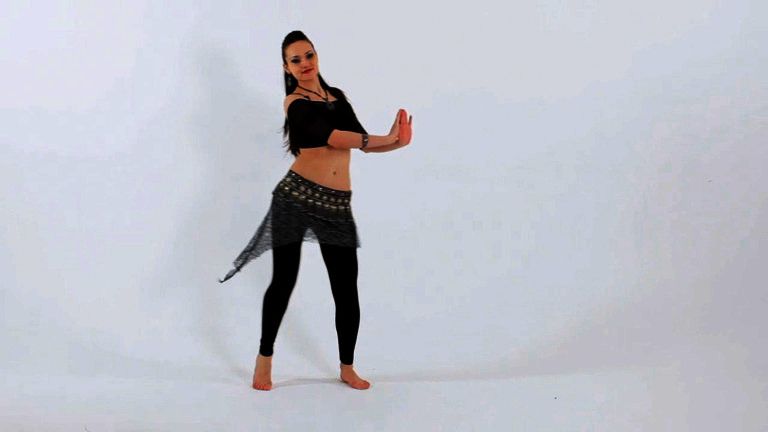 "The best belly is its absence." Many women think so. And they are wrong! Belly flat and adorned with a bas-relief of muscles - this is the privilege of men. A woman's stomach should not be flat. And by no means drawn in! He just has to be. A gentle, slightly convex line of the abdomen (note: not folds of fat in three or four layers, but just a hint of a bulge) gives rise to a feeling of defenselessness, “childishness” - such a stomach resembles the outlines of a child’s figure!
"The best belly is its absence." Many women think so. And they are wrong! Belly flat and adorned with a bas-relief of muscles - this is the privilege of men. A woman's stomach should not be flat. And by no means drawn in! He just has to be. A gentle, slightly convex line of the abdomen (note: not folds of fat in three or four layers, but just a hint of a bulge) gives rise to a feeling of defenselessness, “childishness” - such a stomach resembles the outlines of a child’s figure!
Thus, belly dance is a fully formed modern dance style that allows a modern woman to know herself, reveal her femininity, show her creative energy, light a fire from the inside, it is a way to strengthen her health, become free, beautiful and self-confident!
In general, dance!!!
You will surprise yourself and amaze those around you with a stream of joy and freedom, decorate any holiday with your dance, from the first lessons you will feel how your posture, gait, plasticity of movements are changing.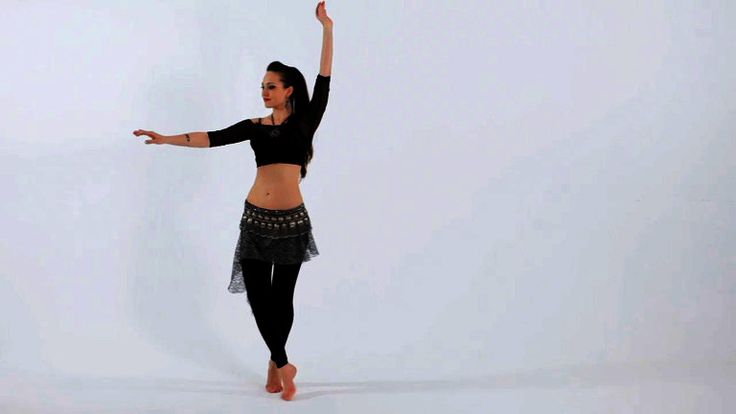
Belly dancing changes a woman, both externally and internally, because during the dance you experience a unique pleasure from movements, a feeling of joy in life, love for the whole world, you learn to live a happy present.
If you lead Oriental dance in studios or fitness clubs, or are just planning to start your coaching career, then this book will be a great help for you in the proper preparation and conduct of classes. Nine chapters deal in detail with all the main parts of the lesson, the principles of competently compiling a workout (training session), and also provide knowledge about the theory of physical activity and the psychology of a fitness instructor.
I wish you success, productive training and grateful clients! Good luck!
| History. Mysterious East has become birthplace of an amazing dance called bellydance or belly dance. Historians cannot exactly name the country where this dance appeared. There are several versions, for example, there is the assumption that this is Egypt, or maybe Mesopotamia, some believe that The origins of belly dance are to be found in India. There are objective reasons for this scatter, which we will not go into for now. I note only that the territory The spread of the dance is extensive: in antiquity bellydance danced both in Egypt and Greece, in Rome, in Babylon and in the Central Asian states. Nowadays belly dance is becoming more and more popular not only in the East, but also in the West. AT In Russia, few knew about this dance before, and associated it exclusively with institute of harems in the East. Hence the negative assessment of belly dancing. Tem nevertheless, even here, in Russia, interest in plastics of this kind is growing. For most people belly dance is just an exotic oriental dance, very beautiful and erotic. However, "the East is a delicate matter," you understand. At the beginning 20th century in the West there was an increased interest in oriental dances, caused scandalous performances of Mata Hari. Herself the dancer claimed to be a performer of Indian temple dancing. Thanks to her, many in Europe connected eastern dancing exclusively with India. This stereotype exists to this day. Dance belly as such began to attract attention after the end romantic adventurous era of Mata Hari, and was named " bellydance at an exhibition in Chicago about a century ago.
Belly dancing is not accidental got such a funny name. "Belly is life". So this is the dance of life. With whom and with what is the concept itself associated? "life"? Of course, with a woman - a mother and with the earth.
Some people still have Bedouin tribes have a custom when women gather in a large tent and dance around the woman in labor, thus helping her in childbirth, and meeting the birth of a child is a joy, so that his life is happy. In Turkey, Arab countries and the Caucasus are now often invited belly dancers for the wedding, wishing the newlyweds well-being and happiness. And what family happiness can be without children? In the East large families are considered the happiest, and their parents enjoy special respect. Almost any modern oriental woman can perform the basic elements of belly dancing because it helps to create harmony in relationships with her husband, maintains health, and is also good preparation for childbirth. Let's go back to history.
From the artist depends on how the dance will be perceived by the public: play, seduction, freedom self-expression to the point of obscenity. USE There is an opinion that with serious illnesses it is impossible cope without drug therapy or surgery. - After 6-12 months, dance classes get rid of menstrual pain, because of which many women have to sit on pills; - Many people say that classes help them cope with ovarian dysfunction; - Significantly improve the condition of the spine after 1 month classes, even in people who have suffered spinal injuries; - Perceptibly develops joint flexibility after 2-3 months, results are noticeable in both young girls and older women; It has also been noted that belly dancing is beneficial affect complexion.
Belly dance actively develops coordination of movements, vestibular apparatus, has a beneficial effect on the ligaments, cardiovascular system. In our time, belly dancing has also turned out to be an excellent prevention. hypertension and cervical osteochondrosis.
For expectant mothers, an ancient oriental dance without excessive aerobic and strength training: - Teaches you how to relax deep muscles. - Trains the muscles of the perineum. How the more elastic these muscles are, the less likely they are to tear and cut during childbirth. - Gives the necessary load on the muscles of the legs. If a woman spends contractions and part of the attempts vertically, then a colossal load. - Gives a great leg vein workout. This is good prevention of varicose veins, which most of the pregnant women. - Trains the muscles of the shoulder girdle that allows you to maintain the shape of the breast. - Exercises the back muscles. These muscles bear the brunt of the load. as the abdomen expands. - Does not allow sudden movements, turns and jerks, which makes its one of the safest types of physical training for a pregnant woman. And, importantly, dance moves help you quickly restore the shape of a young mother. There is an ancient oriental parable: "A man came to a wise man and said to him: "O sage, teach me to distinguish truth from falsehood, beauty from ugliness. Teach me the joys of life." The sage thought and taught the man dance." Emancipation in dance is the most difficult thing. But gradually by achieving this, we change internally. And this manifests itself not only in creativity, but also in life. We become softer, calmer, which means our relationship with the outside world is more harmonious. Appears in us "zest", which is the basis of female charm and attractiveness. The movements of this dance are so individual for everyone man, each physique, that in the process of training a woman in detail studies the features of his own plasticity, learns to love his body and improve it on an individual basis, without trying to squeeze yourself into generally accepted patterns and standards of beauty. There is no body that would not fit" for the dance, it's just that everyone needs a special approach, which with the hostess opens it with joy. We bow to feminine beauty and We preach that there are no ugly women! It is impossible to reduce the whole variety of forms to standard 90-60-90! And so we will argue with advertising-imposed image of elastic pumped-up muscles of women's shoulders, buttocks, belly, thighs.
|
Which style do you like best? - depends on your personality. Belly dancing is unique for every woman so that highlights her beauty and uniqueness of her body movements.
fat folds in three or four layers, but only a hint on the bulge) gives birth feeling of defenselessness, "childhood" - such a belly resembles outlines baby figures! Near such women there are satellites feel patrons, guardians. Many men, especially under-received in childhood maternal tenderness, find special charm in large women's bellies - in their languid swaying, soft touch ... Thus, belly dancing is a fully formed modern dance style that allows for a modern woman to know herself, to reveal herself your femininity, show your creativity energy, light a fire from within, it is a way to strengthen your health, become free, beautiful and self-confident! In general - dance!!! You will surprise yourself and amaze others with a stream of joy and freedom, decorate with your own dancing any holiday, from the first lessons you will feel how your posture, gait, plasticity of movements change. | ||||||||||||||||
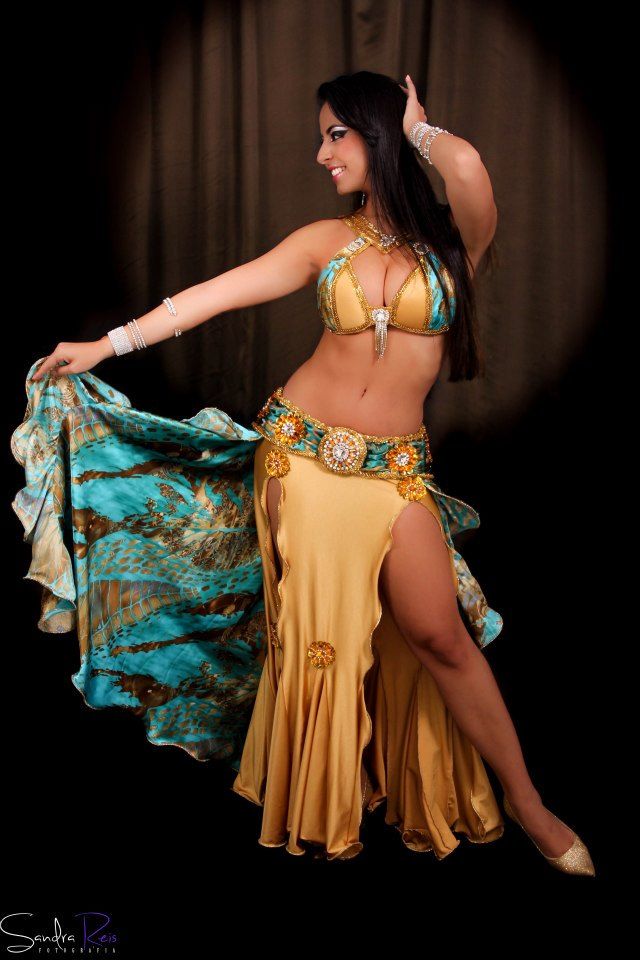
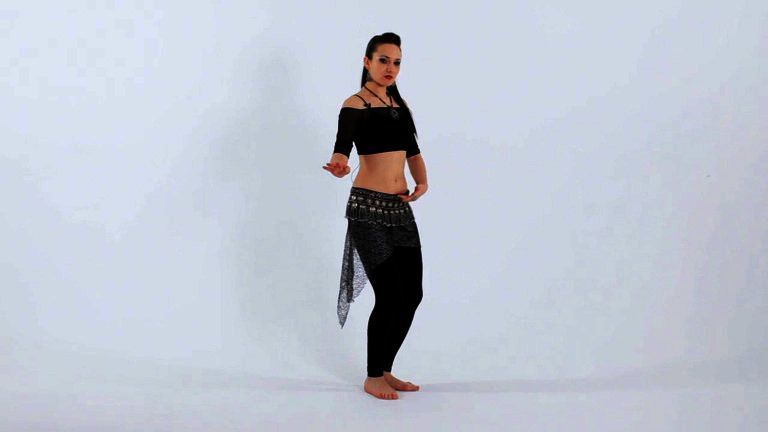
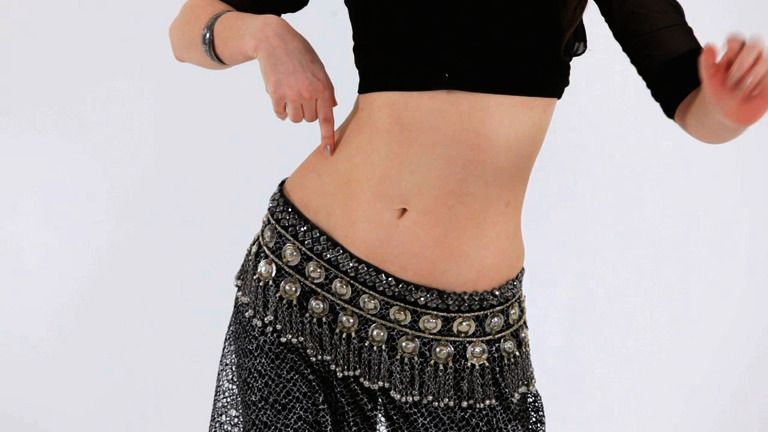 And indeed belly dance is directly related to the development of the cult of the Goddess of Fertility, Mother Goddess. Different peoples called this goddess differently: Anahita, Isis, Ishtar, Aphrodite. This cult was widespread in many ancient states, since agriculture was the basis of their economic life (for example, in Egypt, the Babylonian kingdom, in India). In the mythology of many of the ancient peoples of the East, the sky was associated with a male god, and the earth with female goddess. As a result of their union, all living things appeared, as well as other gods. Rituals in honor of the gods were often accompanied by music and dances, which not only glorified, but also reflected the functions of these gods. Dance - the most expressive means for depicting any activity. If we talk about belly dance, then it reflects the process of conception, gestation fetus and finally birth. That is why belly dance contains erotic elements. As ancient civilizations developed, the dance changed and went beyond the framework of a religious cult.
And indeed belly dance is directly related to the development of the cult of the Goddess of Fertility, Mother Goddess. Different peoples called this goddess differently: Anahita, Isis, Ishtar, Aphrodite. This cult was widespread in many ancient states, since agriculture was the basis of their economic life (for example, in Egypt, the Babylonian kingdom, in India). In the mythology of many of the ancient peoples of the East, the sky was associated with a male god, and the earth with female goddess. As a result of their union, all living things appeared, as well as other gods. Rituals in honor of the gods were often accompanied by music and dances, which not only glorified, but also reflected the functions of these gods. Dance - the most expressive means for depicting any activity. If we talk about belly dance, then it reflects the process of conception, gestation fetus and finally birth. That is why belly dance contains erotic elements. As ancient civilizations developed, the dance changed and went beyond the framework of a religious cult. There was a second direction in its use - secular, that is, dance becomes an entertaining element in everyday culture of the Oriental people.
There was a second direction in its use - secular, that is, dance becomes an entertaining element in everyday culture of the Oriental people. 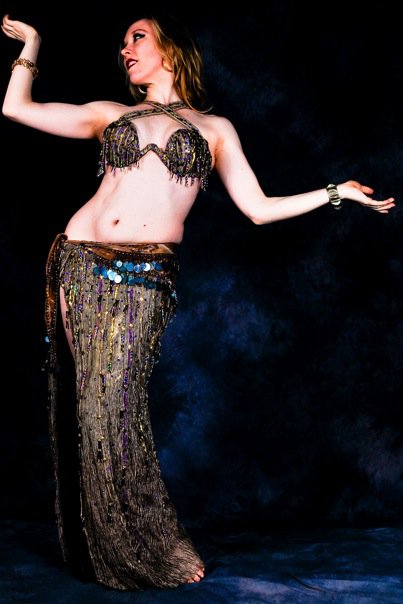 it far from it! It turns out that belly dancing not only carries an aesthetic and spiritual components, but also extremely useful for healing and strengthening the female body, normalizing its work, solving many specific women's issues:
it far from it! It turns out that belly dancing not only carries an aesthetic and spiritual components, but also extremely useful for healing and strengthening the female body, normalizing its work, solving many specific women's issues:  I think you understand that it's about improvement the work of the intestines, which functions after exercise much more productively than without those.
I think you understand that it's about improvement the work of the intestines, which functions after exercise much more productively than without those. 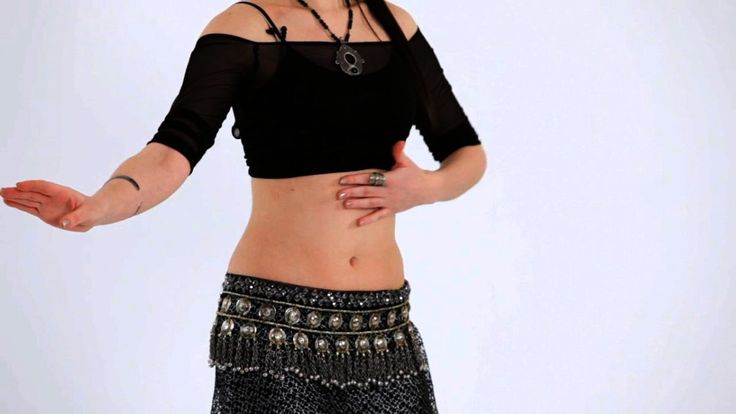 After a few sessions, women "straighten up", open, stop slouching. That is why - pain reduction in cervical, thoracic, lumbar spine. Disappear permanent headaches, strengthened joints.
After a few sessions, women "straighten up", open, stop slouching. That is why - pain reduction in cervical, thoracic, lumbar spine. Disappear permanent headaches, strengthened joints.  This helps for many years to preserve the beautiful breast shape.
This helps for many years to preserve the beautiful breast shape. 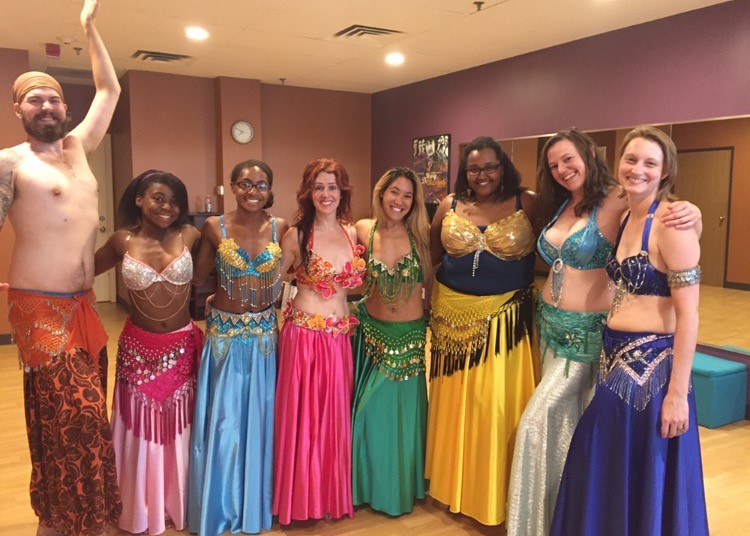 During childbirth, this skill helps reduce pain spasm.
During childbirth, this skill helps reduce pain spasm.  In addition, a dancing woman has more skin. elastic, and during pregnancy it does not stretch to scars, and after childbirth quickly returns to normal.
In addition, a dancing woman has more skin. elastic, and during pregnancy it does not stretch to scars, and after childbirth quickly returns to normal. 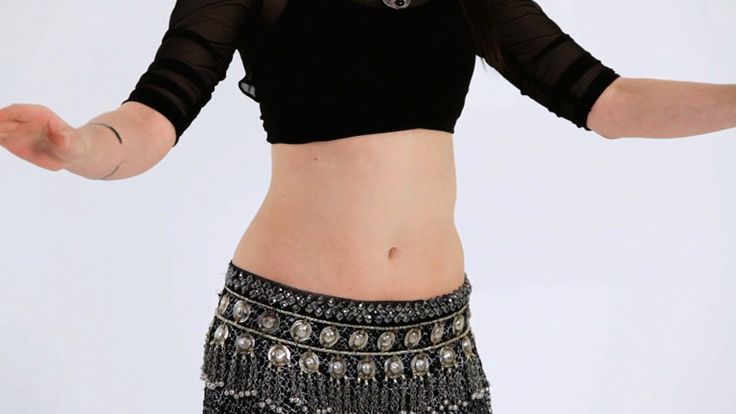 Arabic dance, which most often attract beginners.
Arabic dance, which most often attract beginners. 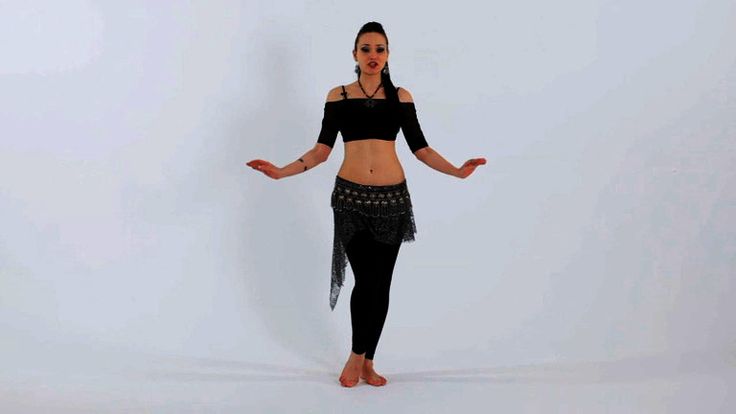 The feeling of one's own uniqueness is emphasized by the execution of the elements belly dance. Even the standard set of basic movements for every woman looks pretty attractive. As self-esteem increases, behavior of a woman, she becomes more relaxed, interesting for herself and surrounding. There is a realization of one's uniqueness, and the world around becomes wonderful.
The feeling of one's own uniqueness is emphasized by the execution of the elements belly dance. Even the standard set of basic movements for every woman looks pretty attractive. As self-esteem increases, behavior of a woman, she becomes more relaxed, interesting for herself and surrounding. There is a realization of one's uniqueness, and the world around becomes wonderful.  You should have seen the way men's expressions change when they find out that I doing belly dancing!!! Their lips break into a smile, and in their eyes sparkle with a mixture of intrigue, curiosity and flirting!
You should have seen the way men's expressions change when they find out that I doing belly dancing!!! Their lips break into a smile, and in their eyes sparkle with a mixture of intrigue, curiosity and flirting! 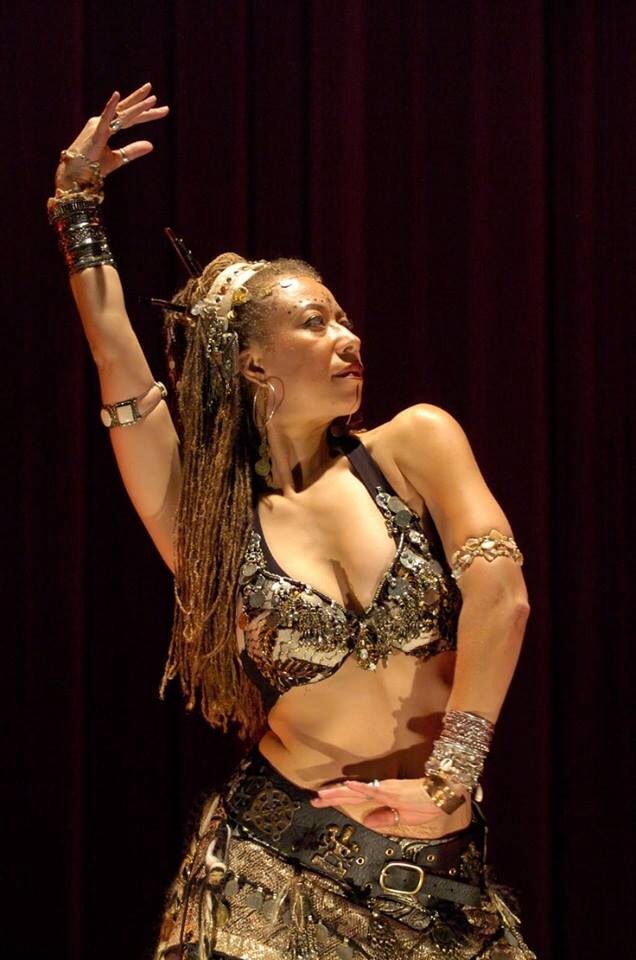 Yes, we are for harmony and smartness, but achieved harmonious development - a conscious exercise of the body, which, by and large counting leads to the exercise of morality. Skinny women are in fashion right now. And the pursuit of flat stomachs sometimes comes to dysmorphia - rejection of the stomach, brought to a painful state. "The best belly is his absence". Many women think so. And they are wrong! Flat bellies and decorated with a bas-relief of muscles - this is the privilege of men. female belly should not be flat. And in any case not retracted! He just has to be.
Yes, we are for harmony and smartness, but achieved harmonious development - a conscious exercise of the body, which, by and large counting leads to the exercise of morality. Skinny women are in fashion right now. And the pursuit of flat stomachs sometimes comes to dysmorphia - rejection of the stomach, brought to a painful state. "The best belly is his absence". Many women think so. And they are wrong! Flat bellies and decorated with a bas-relief of muscles - this is the privilege of men. female belly should not be flat. And in any case not retracted! He just has to be. 